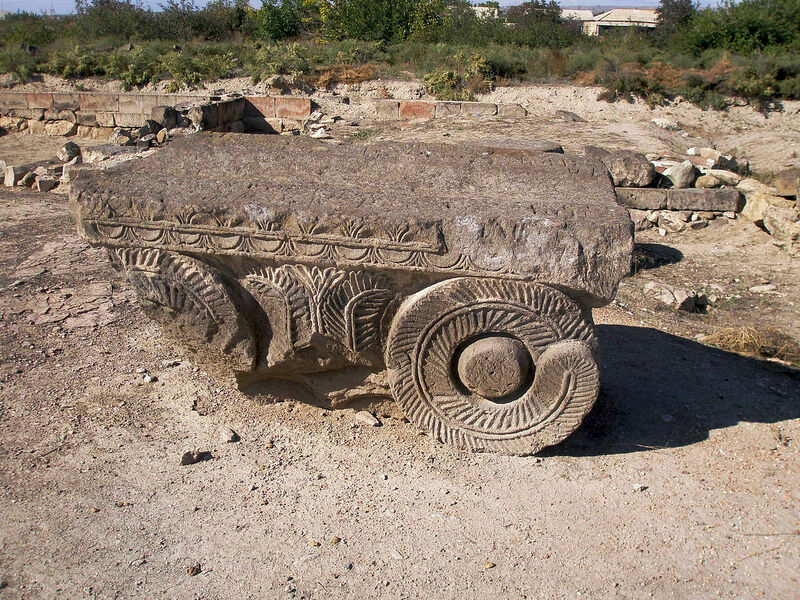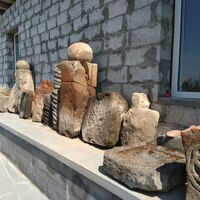Remains of Dvin
Date:
Abandoned in the 1230s
Location or Findspot (Modern-Day Country):
Armenia
Description:
Goods from the Mediterranean basin as well as Iran and Central Asia flowed to and through the major commercial hub of Dvin, one of the wealthiest cities east of Constantinople. It was the capital of early medieval Armenia until the 1230s, when it fell to the Mongols. Ruins of the patriarchal palace are still visible at the archaeological site, including a massive capital (probably seventh century).
Dvin itself was also an important center of craftsmanship famous for its textiles, pottery, glass, and metalwork. The Aygestan Hoard, discovered in the vicinity of Dvin, included a pair of cresent-shaped earrings with long pendants (prependoulia), stylistic elements of which recall both Byzantine and Islamicate jewelry. The hoard contained a coin of the emperor Romanos IV Diogenis (r. 1067-71), which helps gives an endpoint date to the items buried with the coin.
Dvin itself was also an important center of craftsmanship famous for its textiles, pottery, glass, and metalwork. The Aygestan Hoard, discovered in the vicinity of Dvin, included a pair of cresent-shaped earrings with long pendants (prependoulia), stylistic elements of which recall both Byzantine and Islamicate jewelry. The hoard contained a coin of the emperor Romanos IV Diogenis (r. 1067-71), which helps gives an endpoint date to the items buried with the coin.
Relevant Textbook Chapter(s):
4,
6,
8
Repository and Online Resources:
• Significant numbers of objects and fragments from Dvin are now in the Historical Museum of Armenia, Yerevan.
• See an image of the crescent-shaped earrings on the website of the Metropolitan Museum.
Image Credits:
Wikimedia Commons



